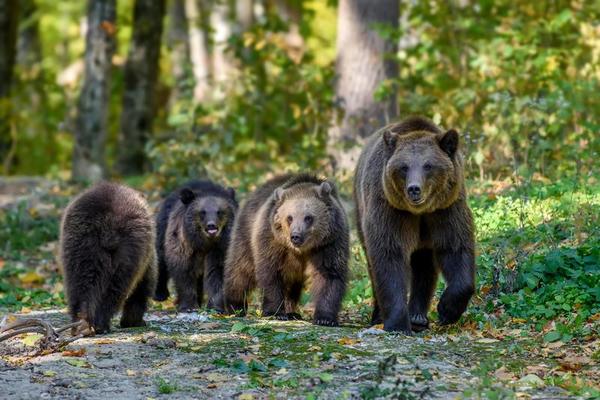Protecting wildlife isn’t just about saving cute animals—it’s about preserving the intricate web of life that keeps our planet humming. From the buzzing bees in your backyard to the elusive snow leopards in the Himalayas, every creature plays a role in maintaining ecological balance. I’ve always been fascinated by wildlife, ever since I was a kid traipsing through the woods, spotting deer tracks, and pretending I was a ranger. But today, with species disappearing at an alarming rate—think 1,000 times faster than natural extinction rates—it’s clear we need actionable strategies to protect our planet’s biodiversity. In this article, I’ll walk you through seven practical, impactful strategies for protecting wildlife, grounded in real-world examples and expert insights. Whether you’re a nature enthusiast or just curious, these steps will show you how to make a difference.
Why Wildlife Conservation Matters
Wildlife isn’t just a backdrop for epic nature documentaries; it’s the backbone of healthy ecosystems. Pollinators like bees support 75% of global crops, while predators like wolves keep prey populations in check, preventing overgrazing. When species vanish, ecosystems wobble, affecting everything from clean water to climate stability. Protecting wildlife means protecting ourselves—our food, air, and future. Let’s dive into seven strategies that can turn the tide for our planet’s creatures.
Strategy 1: Conserve Natural Habitats
The Foundation of Wildlife Survival
Habitats are like homes for wildlife—if they’re destroyed, animals have nowhere to go. Conserving forests, wetlands, and grasslands ensures species have safe spaces to thrive. Think of the Amazon rainforest, where 400 billion trees shelter jaguars, macaws, and countless insects. Yet, deforestation claims 18.7 million acres annually, per the World Wildlife Fund (WWF). Protecting these areas is non-negotiable.
Practical Steps for Habitat Conservation
Habitat loss is often driven by urban sprawl or agriculture, but solutions exist. Reforestation projects, like the DGB Group’s Bulindi Chimpanzee Habitat Restoration in Uganda, plant trees to restore chimpanzee habitats while engaging local communities. You can support such efforts by donating to conservation organizations or volunteering for local restoration projects. Every tree planted is a step toward a healthier ecosystem.
- Support reforestation: Contribute to projects like the Sawa Afforestation Project, which plants millions of trees to restore ecosystems.
- Advocate for protected areas: Push for national parks or wildlife reserves in your region.
- Reduce land use impact: Choose sustainably sourced products to lessen deforestation.
Pros of Habitat Conservation:
- Preserves biodiversity
- Supports carbon sequestration
- Enhances ecotourism opportunities
Cons:
- Can conflict with development needs
- Requires long-term funding
- May face local resistance
Strategy 2: Promote Sustainable Land-Use Practices
Balancing Human Needs with Wildlife
Sustainable land use minimizes habitat destruction while meeting human demands. For instance, agroforestry blends crops with trees, creating habitats for birds and insects while boosting farm yields. In Kenya, farmers using sustainable practices saw a 20% increase in crop productivity, per the United Nations. It’s a win-win for people and wildlife.
How to Implement Sustainable Practices
You don’t need to be a farmer to make a difference. Support brands that use eco-friendly methods, like organic produce or sustainably harvested timber. Governments can incentivize sustainable agriculture with subsidies, while individuals can reduce pesticide use in their gardens. These small changes add up, protecting wildlife from harmful chemicals and habitat loss.
- Choose sustainable products: Look for certifications like Rainforest Alliance or FSC.
- Advocate for policy changes: Support laws promoting eco-friendly farming.
- Reduce chemical use: Opt for natural pest control in your garden.
| Practice | Wildlife Benefit | Human Benefit |
|---|---|---|
| Agroforestry | Provides habitats | Increases crop yields |
| Organic farming | Reduces chemical pollution | Healthier food options |
| Sustainable forestry | Preserves forest ecosystems | Ensures long-term timber supply |
Strategy 3: Support Research and Monitoring
Knowledge Is Power
Understanding wildlife populations is key to saving them. Research tracks species’ health, migration patterns, and threats. For example, GPS collars on African elephants revealed their migration routes, helping conservationists protect critical corridors. Without data, we’re guessing—and that’s not enough to save species like the critically endangered Cozumel raccoon.
Getting Involved in Research
You can contribute by supporting organizations like the Wildlife Conservation Society, which funds research on endangered species. Citizen science projects, like eBird, let you report local wildlife sightings, aiding global databases. Even backyard birdwatching can provide valuable data for scientists tracking population trends.
- Participate in citizen science: Join platforms like iNaturalist to report sightings.
- Fund research initiatives: Donate to groups studying local wildlife.
- Stay informed: Follow conservation research to advocate for evidence-based policies.
Featured Snippet Opportunity: What is wildlife research? Wildlife research involves studying animal populations, behaviors, and habitats to inform conservation strategies. It includes monitoring population sizes, tracking migrations, and assessing threats to ensure species survival.
Strategy 4: Raise Public Awareness
The Power of Education
If people don’t know about a species, they won’t fight for it. Public awareness campaigns, like WWF’s efforts to highlight the plight of Asian elephants, spark action. In Southeast Asia, only 8,000–11,000 elephants remain due to habitat loss, but community education has reduced human-wildlife conflict by 30% in some areas, per WWF posts on X.
Spreading the Word
You can amplify conservation messages by sharing accurate information online or hosting community events. Schools are great places to start—teach kids about local wildlife through fun activities like nature walks. Social media campaigns, like #StopPlasticPollution, also rally global support for wildlife-friendly policies.
- Share on social media: Post about local conservation efforts to inspire others.
- Engage schools: Organize wildlife workshops for students.
- Support campaigns: Join movements like WWF’s plastics treaty advocacy.
Comparison: Awareness Campaigns vs. Direct Action
- Awareness Campaigns: Cost-effective, broad reach, long-term impact.
- Direct Action: Immediate results, resource-intensive, localized effect.
Strategy 5: Create Wildlife-Friendly Areas
Backyards as Sanctuaries
Your backyard can be a haven for wildlife. Planting native flowers attracts pollinators like bees and butterflies, while birdhouses provide nesting spots. In the UK, the RSPB’s “Homes for Wildlife” initiative has created thousands of mini-habitats, boosting local biodiversity by 15%. Even small spaces can make a big difference.
How to Build a Wildlife Area
Start by planting native species—check with local nurseries for plants suited to your region. Avoid pesticides and install water features like birdbaths. If you’re feeling ambitious, invest in larger projects like DGB’s tree-planting programs, which create habitats for countless species.
- Plant native species: Choose plants that support local pollinators.
- Provide water sources: Install birdbaths or small ponds.
- Avoid chemicals: Use natural alternatives to pesticides.
Pros of Wildlife Areas:
- Boosts local biodiversity
- Low-cost for individuals
- Enhances community spaces
Cons:
- Requires ongoing maintenance
- Limited impact in urban areas
- May attract unwanted pests
Strategy 6: Embrace Recycling to Reduce Waste
Less Waste, More Wildlife
Recycling cuts down on landfill waste, which can harm wildlife through pollution and habitat destruction. Plastic pollution alone kills 1 million seabirds annually, per UNESCO. Recycling also reduces the need for raw materials, preserving habitats. For example, recycling aluminum saves 95% of the energy needed for new production, per the EPA.
Making Recycling Work
Recycle diligently—check local guidelines to ensure you’re sorting correctly. Support policies banning single-use plastics, like those championed by WWF’s #PlasticsTreaty campaign. Buy products made from recycled materials to close the loop and reduce habitat pressure.
- Sort waste properly: Follow local recycling rules.
- Support plastic bans: Advocate for policies reducing single-use plastics.
- Buy recycled products: Choose items with recycled content to support the cycle.
| Material | Environmental Impact | Recycling Benefit |
|---|---|---|
| Plastic | Pollutes oceans, kills marine life | Reduces landfill waste |
| Aluminum | High energy use in production | Saves 95% energy |
| Paper | Drives deforestation | Preserves forests |
Strategy 7: Plant Trees for Wildlife
Trees as Lifelines
Trees are wildlife superheroes, providing food, shelter, and breeding grounds. A single oak tree can support over 1,000 species, from insects to birds. Tree-planting programs, like DGB’s initiatives, have restored ecosystems in places like Uganda, supporting species like chimpanzees. Planting trees also sequesters carbon, tackling climate change—a major threat to wildlife.
Getting Involved in Tree Planting
Join local tree-planting events or donate to organizations like the Arbor Day Foundation. In your garden, choose native trees that support local wildlife. Even one tree can create a micro-habitat, offering shade and food for animals.
- Join planting programs: Participate in community tree-planting events.
- Choose native trees: Plant species that support local ecosystems.
- Support global efforts: Donate to reforestation projects like DGB’s.
Featured Snippet Opportunity: Why plant trees for wildlife? Planting trees creates habitats, provides food, and sequesters carbon, supporting biodiversity and combating climate change. Native trees attract local species, enhancing ecosystems.
People Also Ask (PAA)
What are the best ways to protect wildlife?
The best ways include conserving habitats, promoting sustainable practices, supporting research, raising awareness, creating wildlife areas, recycling, and planting trees. Each strategy addresses specific threats like habitat loss or pollution.
How can individuals help wildlife conservation?
Individuals can plant native species, recycle, support conservation organizations, and advocate for eco-friendly policies. Small actions, like reducing plastic use or joining citizen science projects, add up.
Why is wildlife conservation important?
Wildlife conservation maintains biodiversity, ensuring ecosystems function properly. Healthy ecosystems provide clean air, water, and food, benefiting humans and animals alike.
Where can I find conservation projects to support?
Check organizations like WWF, the Nature Conservancy, or local groups via Google My Business listings. Websites like naturetourism.org offer resources for ethical wildlife projects.
What are the best tools for wildlife conservation?
Tools include GPS trackers for research, citizen science apps like iNaturalist, and platforms like GlobalGiving for funding projects. Local nurseries also provide native plants for habitat creation.
FAQ Section
How does habitat conservation help wildlife?
Habitat conservation protects the spaces where animals live, ensuring they have food, shelter, and breeding grounds. Projects like reforestation restore degraded areas, supporting biodiversity.
Can recycling really make a difference for wildlife?
Yes, recycling reduces landfill waste and pollution, which harm wildlife. For example, recycling plastic prevents ocean pollution, saving marine species like seabirds.
How can I get involved in wildlife research?
Join citizen science projects like eBird or iNaturalist to report sightings. You can also donate to organizations funding wildlife research, like the Wildlife Conservation Society.
What’s the easiest way to start protecting wildlife?
Plant native trees or flowers in your yard to create habitats. It’s low-cost, impactful, and supports local species like pollinators and birds.
Are there conservation programs for specific species?
Yes, programs like WWF’s elephant conservation in Southeast Asia or DGB’s chimpanzee habitat restoration target specific species. Search for local or global initiatives online.
Conclusion: Your Role in Wildlife Conservation
Protecting wildlife isn’t just for scientists or activists—it’s for all of us. Whether you’re planting a tree, recycling a bottle, or sharing a post about endangered species, every action counts. I remember visiting a local nature reserve and seeing kids plant saplings with such enthusiasm—it reminded me how small steps spark big change. By embracing these seven strategies, you’re not just saving animals; you’re safeguarding the planet we all share. Start today—pick one strategy, like joining a tree-planting event or supporting a conservation group, and watch the ripple effect. For more resources, visit WWF or explore local projects through The Nature Conservancy. Together, we can ensure wildlife thrives for generations to come.





